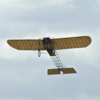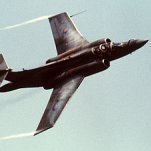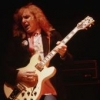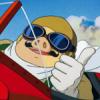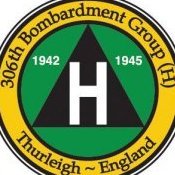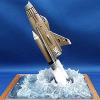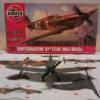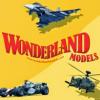Search the Community
Showing results for tags 'IBG'.
-
This build will be of IBG's HMS Zetland, a Hunt II class destroyer in 1942. I don't have much reference fo the model, so will build OOB. To give you an idea how big - or small - the model is ...
- 49 replies
-
- 14
-

-
Dear fellow Britmodellers, here's my 1/72 Crusader Mk.III Anti-Air-Tank with 2cm Oerlikon guns. I bought this kit @ Modelbrno in June, and finished from the box, with the addition of the stowage pieces (one from Quickboost, the other one scratch-built). According to kit instructions, the markings resemble a vehicle of 1st Royal Tank Regiment, 22nd Brigade, 7th Armored Division, in 1944. Painted with Gunze/Mr.Hobby acrylics. Photographs by Wolfgang Rabel (thank you!). Thanks for your interest. Best greetings from Vienna!
- 5 replies
-
- 19
-

-
- 1st Royal Tank Regiment
- British Army
-
(and 1 more)
Tagged with:
-
I've just finished this in the ",dday gb " more pictures on the thread and in the dday gallery ,i used the very nice " 1/72 ibg bedford qlb gun tractor kit ,and a little photo etch detail set ,i opened a couple of doors and the front windows ,used pva soaked tissue for the tarp and rolled a bit up to represent the canvas doors, the bofors gun is a zvezda kit, more for wargaming i believe but a nice little kit all the same, Cheers Glynn
- 10 replies
-
- 20
-

-
Here's what I'll be attempting for this build, a change from aircraft, although I have never finished an AFV in a GB 🙄 IBG's 1/35th Marmon-Herrington armoured car, with resin 'clutter' by black dog. We'll see how it goes, I may add some figures, not my strong point!
-
Hi guys; This is my 3° model finished this year. I really like IBG models. I had a good moments building my Karás last year. This Łoś is a beautiful model. I used Hataka paints and a Yahu panel. Cheers.
-
This is the IBG 1/72 kit that took a couple of days to finish with some rather large crew figures by Germania Figuren. It was Japan's attempt to square up the M4 Sherman that was completely outclassing other Japanese tanks such as the Chi-Ha. An old French-designed WWI 75mm gun and 50mm of armour made the intent rather doubtful. This model represents a tank on the home front that never got to find out.
-
Hey Guys, I have here IBG Models new Panzer III. It's not everyday you walk into WH Smiths and see them selling models so I thought why not I'll try something different. Construction was simple enough and with it being 1/72 and no running gear construction, apart from gluing it to the hull. Detail was utterly superb though, puts some 1/35 kits to shame... Painted with humbrol enamels and finished with a light weathering as well as drybrushing. Really enjoyable kit to be fair, and I've got their panzer II on the bench now! Thanks for looking guys! Sam
-
Here is my completed build of the IBG Scammell Pioneer Recovery vehicle and I've paired it with a build of the old Airfix 15cwt CMP kit from way back to illustrate the Scammell in action. I don't claim 100% accuracy in the portrayal, the figures are Aussies and the unit markings are for the 9th Div so this could be somewhere in North Africa or Sicily or Italy... I'm not that bothered to be honest You can see the build thread here:
-
Otter Armoured Car 1:72 IBG Models The Otter armoured car was a Canadian designed light reconnaissance vehicle, similar in layout to the British Humber armoured car but based on the Chevrolet C15 military truck chassis. The Otter was both larger and heavier than the Humber, but made up for this with a more powerful six cylinder liquid cooled engine. It was protected by armour up to 12mm thick and was armed with a Bren light machine gun and a Boys anti-tank rifle. The Canadian manufacturer produced over 1700 examples by the end of the War. It saw action with the Canadian Army in the Italy and France, and was also used by the South African Army and the RAF Regiment. After the War it was used by the Netherlands and Jordan. Since the release of their first indigenous kit in 2008, IBG Models have built up an impressive catalogue of models, most notably in 1:35 and 1:72 scale. Don't make the mistake of assuming they are another manufacturer of limited run kits from Central and Eastern Europe though. Having seen their recent output, I would place them at or near the top of the order of manufacturers of small scale AFV kits. This new kit of the Otter is a very welcome addition to the range. It arrives packed into a surprisingly large top-opening box inside which are a two frames of crisply moulded grey plastic, a small fret of photo etched brass parts and a small decal sheet. The plastic parts are crisply moulded and well detailed, although the attachment points for a lot of the parts are rather thick. Construction starts with the engine. This is comprised four parts, including a separately moulded exhaust manifold and fan. The axles and brake assemblies can also be constructed at this stage, along with the leaf spring suspension units, all of which fix to the simple ladder-type chassis along with the drive shafts, transfer box and exhaust. The small, open top turret for the Bren gun can also be assembled at this stage. Apart from the Bren itself – which is a lovely piece of moulding – the turret includes a detailed mount and seat. Once the oily bits have been fixed to the chassis, the floor pan of the vehicle can be assembled. This includes most of what you need to detail the interior, including two multi-part seats, the steering wheel, instrument binnacle and other details. A couple of Lee Enfield rifles are also included for stowage on the inside of the hull sides. The frontal armour includes separately moulded hatches for the driver and commander/gunner, but the instructions show them fitted in the closed position only. A little scratch building might be necessary in order to pose them in the open position. My one real problem with this kit is the fact that although the hatches can (theoretically) be opened and there is a pretty decent interior, IBG have not included the Boys anti-tank rifle. I can't for the life of me understand this decision, particularly as it is shown on the box artwork. Much as I like this kit and am grateful to IBG for producing it, this is a real head scratcher. Anyway, the rest of the build in straightforward, with much of the hull made up of separate parts and nice details such as individually moulded tools (the hallmark of a well-detailed AFV kit in this scale). Extras such as a photo etched pierced steel plank and mud flaps are also included. Markings are included for Otters of the 12th Carpathian Rifle Division of the Polish II Corps, Italy and HQ Platoon, 11th Field Company, Royal Canadian Engineers, 2nd Infantry Division, Normandy 1944. Conclusion I really enjoy reviewing IBG's kits, and it's great to see them turn out another cracker in the form of this Otter. Detail is excellent and, apart from hefty attachment points, the quality of manufacture looks to be up there with the very best. The inclusion of photo etched parts is welcome too. It's a shame that crew figures, such as those included with their recent Type 89 tank, haven't been included. It's even more of a shame that the Boys anti-tank rifle is missing too, but nonetheless this kit can still be highly recommended. Review sample courtesy of IBG Models
-
PZL 23B Karas Polish Light Bomber (early) 1:72 IBG The PZL.23 Karas was a light bomber and reconnaissance aircraft developed by Państwowe Zakłady Lotnicze (PZL) during the interwar period. A modern aircraft by the standards of the day, the Karas was of all-metal construction and was powered by a licence-built version of the Bristol Pegasus VIII radial engine. The Karas was the main light bomber in the Polish Air Force by the outbreak of war. As such, it has the distinction of having conducted the first bombing raid on Reich territory, when a single aircraft of the 21st Squadron bombed a factory in Ohlau (now Oława in modern-day Poland) on 2 September 1939. The maximum bomb load that the type could carry was 700kg, comprising 6 x 100kg and 2 x 50kg bombs. The PZL 23 is the second aircraft kit produced by IBG Models. The first, the RWD-8, appeared in 2015 and was available in three different boxings. This kit continues that trend, with OBG releasing PZL 23A, B (early), B (late) and PZL 42 boxings. Here we have the early version of the PZL.23B. Inside the box are five sprues of light grey plastic, a single sprue of clear plastic, a set of photo etched detail parts and decals. The parts are all superbly moulded and I'd go as far as to say they look as good as anything from Japan. A quick review of the instructions reveals this to be a well-detailed kit, comparable to an Eduard product in places, although without the complex engineering that the Czech manufacturer is famous for. Constructions starts with the cockpit. Most of the details are moulded in plastic, but as you would expect the fret of photo etched parts contributes details such as the sight for the rear gunner's Vickers machine gun and some struts for the crew seats. The overall area is superbly detailed and even includes photo etched rudder pedals. The central part of the cockpit, including the bomb aimer's position, fixes to the central span of the lower wing, while the pilot and the rear gunner's positions fit inside the vertically split fuselage halves. Once the fuselage halves are fixed together, they can be joined to the wing. The upper cowling can also be fitted in place at this stage. Once the fuselage and wing are complete, the engine and the rest of the flying surfaces can be assembled. The Pegasus engine is nicely detailed and fits into the one-piece cowling behind the two-bladed propeller. The horizontal stabilisers and vertical tail are all moulded as solid parts, but are very nicely done. The gondola, which houses the combat position and lower-rear gun position for the bomb aimer, is a seperate sub-assembly which features a nice Vickers F gun with photo etched ring and bead sight. The main gear legs can be finished with partial or full streamlined fairings. Once in place, all that remains is to fit the exhaust pipe and bomb load. The correct mix of 100kg and 50kg bombs have been supplied. The canopy (and the rest of the clear parts are very well moulded, with crisp framelines. The decal sheet provides just one option, for PZL. 23B Karas, 1st Production Series, 12 Reconnaissance Squadron, 1st Air Regiment. The decals are nicely printed and a smattering of stencils have been included too. Conclusion Once again I have to congratulate IBG Models for producing a mainstream kit of an interesting and important, if not terribly well-known type. For those used to building limited run kits of types such as this, the fact that the kit is so nicely executed is a massive bonus. The level of detail is excellent and the quality of manufacture is up there with the best names in the business. Highly recommended. Review sample courtesy of
-
Chevrolet C30A General Service (Steel Body) 1:72 IBG The Canadian Military Pattern truck was a class of vehicles produced by Ford, Chevrolet/GM and Dodge to a British Army specification. The trucks were used by Britain and her Commonwealth allies in almost every theatre of war from the time of the truck's introduction in 1940. By the end of the War, over half a million examples had been built, accounting for around two-thirds of all military vehicle production in Canada during the period. The most commonly produced sub-variant was the 4x4 3 Tonne version, which was produced by both Chevrolet and Ford. The C30 shared the same platform and wheelbase as the C60s variant previously kitted by IBG. A range of standard cab designs were employed, with the first, second and third designs rather confusingly labelled Nos.11 (depicted in this kit), 12 and 13. After the War the type continued in military service around the world, as well as finding non-military roles such as forestry, grain transport and snow ploughing. IBG Models have been on a roll lately, churning out a range of excellent kits at a rate that would rival some of the major players in the market. This seems quite fitting seeing as they now make some of the best small scale AFV kits around. This new kit of the C30A is a very welcome addition to the range. It arrives packed into a surprisingly large top-opening box inside which are a five frames of crisply moulded grey plastic and a small decal sheet. The plastic parts are crisply moulded and well detailed. The attachment points seem finer than in a lot of their previous releases, but care will still need to be taken when removing some of the smaller parts. Construction starts with the engine. This comprises four parts, including a separately moulded exhaust manifold and fan. The axles, drive shaft and brake assemblies can also be constructed at this stage. The parts are identical to the C60S we reviewed some time ago – no surprise given that the two kits share a common sprue. Construction moves swiftly on to the cab. The Pattern 11 cab is well-detailed, and includes two-part seats and a steering wheel with separate column. A sheet of film is used for the windscreen. Once cab is finished, construction returns to the ladder-type chassis. The leaf spring suspension units can now be added, along with the drive shafts, transfer box, fuel tank and exhaust. The wheels are next and while they are moulded with tyres in place, they are nicely detailed for the scale. The load area can be finised with or without tarpaulin. If you choose not to use the part for the tarpaulin cover, then a complex framework can be added in its place. The tarpaulin cover is moulded as a single part - much easier for the modeller in a hurry! The decal sheet provides the following options: Chevrolet C30A GS, 48th Highlanders, 1st Canadian Infantry Brigade, 1st Canadian Infantry Division, England, 1942; and Chevrolet C30A GS, 4th Canadian Infantry Brigade, HQ Company, 2nd Canadian Infantry Division, England, 1942. Conclusion I really enjoy reviewing IBG's kits and it's great to see them turn out another variant of the CMP truck in the form of the C30. Detail is excellent and the quality of manufacture looks to be up there with the very best. It's a shame that crew figures, such as those included with their recent Type 89 tank, haven't been included, but I guess they were spoiling us with that particular kit. Nevertheless, this is a great little kit that can still be highly recommended. Review sample courtesy of
-
Glynn has talked me into posting my build of the IBG Scammell Pioneer SV2S Heavy Breakdown Tractor. This is the one I mean. and I'm hoping to build an RAF version. I've already started the build and I'll post photos as I go. I built and weathered the engine first, you may have seen these pictures in Glynn's post. Fuse wire, solder, a couple of bits of sprue and some Tamiya masking tape. I'm using Village Photos to upload the pictures but they seem a bit large. Anyone know how to make them smaller? Best Wishes Andy
- 21 replies
-
- 9
-

-
- IBG Scammell Pioneer SV2S Heavy Breakdown Tractor
- 1/35
-
(and 1 more)
Tagged with:
-
Stridsvagn M/39 Swedish Light Tank 1:72 IBG Models The Stridsvagn M/39 was a development of the L-60 Swedish light tank, and advanced and innovative design first produced in 1934. Lightly armoured and armed, the design took advantage of the powerful but compact 7.9 litre Bussing-Nag V8 engine and torsion bar suspension in order to achieve success as a reconnaissance tank. As the name suggests, the M/39 entered service with the Swedish Army in 1939. The designed was also developed into the successful Toldi light tank by the Hungarian Army. Tanks were also sold to Ireland (2) and after World War II to Dominicana Republic (20). The m/40L version served in the Dominicanan Civil War of 1965. The last examples were only retired by the Dominican Army in 2002. This kit first saw the light of day last year in the guise of the Hugaran Toldi I, II, IIa and III variants. Now IBG have turned their attention to the indigenous Swedish variants, starting with the M/39. The kit packed into a fairly large (about the twice the size it needs to be) top-opening box adorned with the kind of high quality artwork we've come to expect of IBG. Inside the box are a number of sprues of crisply moulded grey plastic. The kit has all the hallmarks of a modern, high quality tooling as good as those from any other mainstream producer. Construction starts with the lower hull, suspension and running gear. The road wheels, drive sprocket and idlers are all nicely moulded and match photographs of the real thing very well. The suspension swing arms are moulded separately to the lower hull, however, so care will have to be taken to ensure everything lines up properly with all of the wheels touching the ground. Tracks are of the link and length variety and are very nicely rendered. Photos of the real thing show a very slight sag in the upper run between the return rollers, so a dip in hot water might be necessary in order to achieve this effect. Once the exhausts and a couple of other small details have been fixed in place, construction can move on to the upper hull. This sub-assembly is just as detailed as the lower hull. The driver's hatch is moulded separately, as are the tools and stowage bins. The engine vent and air intake cover are provided for on the photo etched sheet. Fenders and engine vents are all moulded in place. The turret is fairly simple, but features a separately moulded hatch, spare road wheel and separately moulded main gun and coaxial machine guns. The overall effect should be very pleasing. One colour scheme is shown in the instructions, but no specific tank as the decal sheet includes a full set of numbers in order to enable a range of different tanks to be modelled. The decal sheet itself is nicely printed. Conclusion I really liked IBG's Toldi kits, so it's good to see them turn their attention to the original Swedish series of light tanks. Detail is excellent and the quality of moulded parts is up there with the very best. The link and length tracks and photo etched parts are a welcome inclusion too. Highly recommended. Review sample courtesy of IBG Models
-
Type 89 Japanese Medium Tank Kou (gasoline early) 1:72 IBG Models The Type 89 I-Go was a medium tank employed by the Imperial Japanese Army between 1932 and 1942. It has the distinction of being the first mass-production diesel-engined tank, although the version depicted in this kit is the early petrol-engined version. Armed with a 57mm main gun, the Type 89 proved to be effective against enemy fortifications in campaigns in Manchuria and China. Despite being upgraded and modernised at various points during its life, such as with the addition of a radio, it was still a fundamentally 1920s design and was considered obsolete by the outbreak of the Second World War. The first variant to be depicted by IBG was one of the earlier petrol powered variants with the later turret and tracks/running gear. Now they have turned their attention to the earlier petrol powered version with the earlier turret. In usual IBG style The kit arrives packed into a surprisingly large top-opening box (I've worked out that their boxes are a standard size, regardless of the volume of plastic contained within) inside which are a large number of sprues of crisply moulded grey plastic. Just because this producer hails from central/eastern Europe, don't think for a moment that this is a limited run kit. It has all the hallmarks of a cutting edge kit, with high quality, slide moulded parts as good as those from any other mainstream producer. Also included is a decal sheet, a small fret of brass parts and colour instructions. All-in-all, it looks like a quality package. Construction starts with the suspension and running gear. The road wheels are split into inner and outer faces which fit either side of the pre-moulded leaf spring suspension units. The suspension and road wheels fit onto the floor of the hull, which then joins onto the box-like structure of the upper hull. The glacis plate is moulded separately. The drive sprocket fits into the side of the hull, while the idler fits into the side skirts before being joined to the hull along with the return rollers. The tracks are very nicely rendered and are of the link and length variety, for which I have a strong preference. Construction of the running gear and tracks looks like it will be quite labour intensive, but IBG have made some use of slide moulding in order to reduce the part count whilst retaining a very good level of detail. With the hull, running gear and tracks assembled, construction turns to details such as the fenders and stowage boxes. These have to be fitted to the sides and rear of the hull. Naturally smaller details such as tools are all moulded separately, which is great for detail-hungry modellers. A rather nice exhaust is included, as well as photo etched parts for the exhaust shroud. This is a shrewd move, as such a part could not be realistically recreated from injection moulded plastic. The turret is made up of six parts, including the rather puny main gun and rear-firing machine gun. The muzzle of the gun has been manufactured using a multi-part mould to save the modeller having to drill out the opening. The commander's hatch can be finished in either open or closed positions. For once you can actually take advantage of this feature because IBG have thoughtfully included two crew figures – and very nice they are too – although they are not mentioned in the instructions and don't even feature on the diagram that shows the layout of the sprues. Two marking options are shown in the instructions, a Type 89 tank of an unknown IJA unit, based in China in the 1930s and a tank of the Special Navy Landing Forces, IJN, based in Shanghai in the 1930s. The decal sheet itself is nicely printed. Conclusion I really enjoyed reviewing IBG's recent small scale armour kits, so it's great to see them turn out another variant of their new Type 89. Detail is excellent and the quality of manufacture looks to be up there with the very best. The inclusion of photo etched parts and especially the crew figures is very welcome too. Highly recommended. Review sample courtesy of IBG Models
-
IBG Models catalog 2017 online http://www.ibgmodels.com/IBG_Models_KATALOG.pdf V.P.
-
KTO Rosomak - Polish APC 1:35 IBG Models The KTO Rosomak is an 8x8 multi-role vehicle produced under licence by Rosomak SA a Polish Defence company. The vehicle is licenced by Patria of Finland. The Patria AMV (Armoured Modular Vehicle) was designed like many of the current generation of wheeled armoured vehicles to be able to fit many different types of body on the same chassis. The vehicle is deigned to withstand 30mm rounds and has a very good level of mine protection. Poland is the biggest user of this APC with 997 delivered or on order. There are a few different configurations in use. This version features the standard 30mm Canon turret. These vehicles were deployed to Chad in 2008/9 by the Polish Army. The Kit This is the first kit the reviewer has seen from IBG and it looks impressive. There are 14 sprues of tan plastic, a clear sprue, 8 tyre treads and a sheet of photo-etch. The quality of the moulding is excellent, with crisp parts and no flash or defects visible. I full engine bay and interior is provided for the vehicle if the modeller want to goto town and add it all in. Unlike other wheeled APC kits the wheels are not rubber tyres but IBG have come up with a novel solution. The hubs and tyre side walls as moulded together and these add into the outer tread part with the join at a mould seam on the tyre. Construction starts by building up all eight of the wheels which are then put to one side. Following this the four transmission boxes for the four axles are made up along with an additional transmission component; these are also set aside. A side locker and various hatches are then assembled also to be set aside. The next step is to assemble interior components (again for set aside) the drivers compartment is built up as are the eight passenger seats for the rear. The engine is the next sub-assembly to be made up (yep you guesses it for set aside again!) this is well moulded unit made up from 22 parts, but leaving room for extra detailing if the modeller wants. The main chassis is now put together and build very much like the real thing with 4 side beams held together with 14 cross members. Once together the set aside transmission parts can be added in. The suspension units now need to be added, these are complicated with 20 parts each side so pay attention to the instructions. The instructions have you add the wheels next though I suspect most modellers will leave these off until the end. Construction then moves onto the interior of the APC. The seats are added to the rear compartment along with various lockers and internal structures. The bulkheads for the engine compartment are added and the drivers console installed. Once this is in the engine can be installed as well. For the rear of the APC two shrouded propellers are added which move the APC through water. The lockers built earlier are also added at this stage. The rear bulkhead is installed along with the doors. If leaving these open it might be best to leave them until nearer the end. Moving now to the top part of the APC hull hatches the the main driver hatch are built up and added. A spare tyre mount is provided for the front of the vehicle, though check your references before adding it as it was not always fitted. No spare wheel is provided for the mount. The main top hull is further built up with more parts and grab handles. PE is used for the grills over the engine compartment. The last major component of construction is the turret fitted to this vehicle. This is the standard infantry support version with a 30mm cannon. As with the rest of the vehicle a full interior is provided here as well. The turret basket is completed with the operators position and the commanders position. The basket is added to the lower turret ring along with the gun mount. The main single part turret top is then added over this. Additional armour is then added to the outside of the turret along with the crew hatches and viewing periscopes. The turret is then added to the hull. Decals There are two sets of markings for vehicles used in Chad in 2009. These feature both the EUFOR and UN markings. An additional set is for a Polish based vehicle. Conclusion This is a good new kit of a relatively unknown out side of Poland APC. Highly recommended for those who would like something a little different. Review sample courtesy of
-
Type 89 Japanese Medium Tank Kou (gasoline late) 1:72 IBG Models The Type 89 I-Go was a medium tank employed by the Imperial Japanese Army between 1932 and 1942. It has the distinction of being the first mass-production diesel engined tank, although the version depicted in this kit is the petrol engined version. Armed with a 57mm main gun, the Type 89 proved to be effective against enemy fortifications in campaigns in Manchuria and China. Despite being upgraded and modernised at various points during its life, such as with the addition of a radio, it was still a fundamentally 1920s design and was considered obsolete by the outbreak of the Second World War. The first variant to be depicted by IBG is one of the earlier petrol powered variants, but it has the later turret and tracks/running gear. Based in Warsaw, Poland, IBG Models started out in 1991 as a model kit importer and distributor. They released their first plastic kit – a 1:72 scale Bedford QLD - in 2008, and have gradually built up a range of interesting kits of different vehicles from the WWII period in both 1/72 and 1/35 scale. The latest addition to their catalogue is the Type 89 Medium Tank. The kit arrives packed into a surprisingly large top-opening box inside which are a large number of sprues of crisply moulded grey plastic. Just because this producer hails from central/eastern Europe, don't think for a moment that this is a limited run kit. It has all the hallmarks of a cutting edge kit, with high quality, slide moulded parts as good as those from any other mainstream producer. Construction starts with the lower hull, suspension and running gear. The road wheels are each moulded with separate inner and outer faces, both of which fit onto the pre-moulded leaf spring suspension units. The drive sprocket, idler and return rollers are all nicely moulded too. The tracks are very nicely rendered and are of the link and length variety, for which I have a strong preference. The box-like hull is made up of upper and lower parts, with just the front glacis plate needed to finish it off. Extensive use has been made of slide moulding in order to reduce the part count whilst retaining a high level of detail. You won't need to worry too much about the fit and finish of the suspension components, as for the most part they will be covered up by the large armoured covers. Next up are the fenders and stowage boxes, which have to be fitted to the sides and rear of the hull. Naturally smaller details such as tools are all moulded separately, which is great for detail-hungry modellers. A rather nice exhaust is included, as well as photo etched parts for the exhaust shroud. This will prove to be a shrewd move, as such as part could not be satisfactorily recreated from injection moulded plastic. The turret is made up of eight parts, and again slide moulding has been used to keep the part count down and the detail level up. The muzzle of the 57mm gun has also been manufactured using a multi-part mould to save the modeller having to drill out this small part. The commander's hatch can be finished in either open or closed positions. For once you can actually take advantage of this feature because IBG have thoughtfully included two crew figures – and very nice they are too – although they are not mentioned in the instructions and don't even feature on the diagram that shows the layout of the sprues. Just one marking option is shown in the instructions, a Type 89 tank of the 7th tank regiment deployed in Luzon, Philippines, 1941-2. The decal sheet itself is nicely printed. Conclusion I really enjoyed reviewing IBG's recent Toldi tank kits, so it's great to see them turn out another cracker in the form of this new Type 89. Detail is excellent and the quality of manufacture looks to be up there with the very best. The inclusion of photo etched parts and particularly crew figures is very welcome too. Highly recommended. Review sample courtesy of IBG Models
-
KTO Rosomak with OSS-M Turret 1:35 IBG Models The KTO Rosomak is an 8x8 multi-role vehicle produced under licence by Rosomak SA a Polish Defence company. The vehicle is licenced by Patria of Finland. The Patria AMV (Armoured Modular Vehicle) was designed like many of the current generation of wheeled armoured vehicles to be able to fit many different types of body on the same chassis. The vehicle is deigned to withstand 30mm rounds and has a very good level of mine protection. Poland is the biggest user of this APC with 997 delivered or on order. There are a few different configurations in use. This version features the OSS-M turret which can be armed with either a 40mm grenade launcher, 12.7mm heavy machine gun or a 7.62mm light machine gun. These vehicles were deployed to Chad in 2008/9 by the Polish Army. The Kit This is the first kit the reviewer has seen from IBG and it looks impressive. There are 14 sprues of tan plastic, a clear sprue, 8 tyre treads and a sheet of photo-etch. The quality of the moulding is excellent, with crisp parts and no flash or defects visible. I full engine bay and interior is provided for the vehicle if the modeller want to goto town and add it all in. Unlike other wheeled APC kits the wheels are not rubber tyres but IBG have come up with a novel solution. The hubs and tyre side walls as moulded together and these add into the outer tread part with the join at a mould seam on the tyre. Construction starts by building up all eight of the wheels which are then put to one side. Following this the four transmission boxes for the four axles are made up along with an additional transmission component; these are also set aside. A side locker and various hatches are then assembled also to be set aside. The next step is to assemble interior components (again for set aside) the drivers compartment is built up as are the eight passenger seats for the rear. The engine is the next sub-assembly to be made up (yep you guesses it for set aside again!) this is well moulded unit made up from 22 parts, but leaving room for extra detailing if the modeller wants. The main chassis is now put together and build very much like the real thing with 4 side beams held together with 14 cross members. Once together the set aside transmission parts can be added in. The suspension units now need to be added, these are complicated with 20 parts each side so pay attention to the instructions. The instructions have you add the wheels next though I suspect most modellers will leave these off until the end. Construction then moves onto the interior of the APC. The seats are added to the rear compartment along with various lockers and internal structures. The bulkheads for the engine compartment are added and the drivers console installed. Once this is in the engine can be installed as well. For the rear of the APC two shrouded propellers are added which move the APC through water. The lockers built earlier are also added at this stage. The rear bulkhead is installed along with the doors. If leaving these open it might be best to leave them until nearer the end. Moving now to the top part of the APC hull hatches the the main driver hatch are built up and added. A spare tyre mount is provided for the front of the vehicle, though check your references before adding it as it was not always fitted. No spare wheel is provided for the mount. The main top hull is further built up with more parts and grab handles. PE is used for the grills over the engine compartment. The last major component of construction is the turret fitted to this vehicle. This can either be fitted with a grenade launcher or heavy machine gun. Both are supplied in the kit and it is up to the modeller to check their references for which one to fit. The turret is built up from a base part, two sides, front & back. Armoured glass is represented by clear parts. To finish construction the lower and upper hulls are joined and the turret fitted on via an adaptor ring, Decals There are two sets of markings for vehicles used in Chad in 2009. These feature both the EUFOR and UN markings. Conclusion This is a good new kit of a relatively unknown out side of Poland APC. Highly recommended for those who would like something a little different. Review sample courtesy of
-
The IBG Models catalog 2016 is online: http://www.ibgmodels.com/2016_IBG_cat.pdf Source: https://www.facebook.com/ibgmodels/?fref=nf Nothing about the 1/72nd aircraft programme announced about a year ago in the catalog 2015... http://www.britmodeller.com/forums/index.php?/topic/234979057-172-polish-wing-1918-2015-ibg-models172nd-ac-programme-2015/ V.P.
-
Rumour has it that IBG will be announcing a 1/72 Zrinyi SPG at the Nuremburg show. The Turan and a pair of as yet mysterious 'Japanese Tanks' are also alleged to be on the way......More when I can find it. http://www.network54.com/Forum/47210/message/1453387203/IBG+Models+2016
-
Here is my take on IBG's recent release RWD-8 kit. An initial trainer rather like Britain's Tiger Moth, the parasol-winged RWD-8 was made by two manufacturers, DWL for the civilian market and PWL for the military and civil markets. The main difference, sfaik, is in the undercarriage, and the kit helpfully includes both types. The components were quite fine and hard to remove without breaking but overall the build was quite intuitive and went well. The decal option was a little disappointing (a single rather drab civilian flying school example rather than the military version illustrated on the box) so I did some research online and found a crashed example, serial 34-73, which I was able to mock up using my spares box. The Polish chequers on the rudder are undoubtedly too big and the underwing letters/numbers are a litle ropey but passable if you don't look too closely. Overall, a nicely-moulded kit of an attractive little aircraft and an enjoyable build.
-
I'm rather pleased with this one: Diamond T 968/ William Bros 'SnoFlyr' rotary snowplough. Used by the RAF from about 1943, originally developed for the US Navy, these were versions of a civilian highway model, themselves versions of a railway design. The chassis was cut a little shorter at the front, and obviously the winch & front bumper assembly left off. The support frame assembly was scratch-built. The Rotary Snowplough was scratch-built using plasticard and microstrip and rod. There are some pictures on the web of this unit attached to a FWD HAR-1, and I used these pics and a copy of January 1946 edition of Popular Mechanics (bought on the web) to produce a scale(-ish) drawing. The engine cover on the rear was again scratch-built using plasticard. Most of the RAF examples had a Coventry Climax R6 engine to power the snowplough, through a transfer case, and provide hydraulic power for the controls and lifting gear. The chap was from one of the many Airfix RAF vehicle sets. I reshaped head and hands to represent a woolly hat and gloves, and added a tissue paper(+PVA glue) leather jerkin (the famous 'Don R'), on which I tried to represent the wind. The colour scheme is basically US Olive Drab, mixed to Mike Starmer's spec. At this stage of the war the RAF didn't re-paint vehicles until they needed it- so most RAF vehicles would've been in the colours they were supplied in. I sprayed Humbrol Glosscote over it, applied the decals and a light blackwash, and finished with a coating of Humbrol Mattcote. I did a quick dusting of artists pastels to get the snow effect. The base was a spare piece of cotton glued onto the base and covered in a filler called 'OneTime' this is a lightweight decorators filler (uses micro balloons) designed to fill deep holes and dry quickly. AS you can see it dries really white, and rock hard.
- 2 replies
-
- 6
-

-
- snowplough
- snowclearing
-
(and 8 more)
Tagged with:
-
We've got a few new kits from ICM and IBG in stock now, including two trucks, a figure set and one aircraft. IBG have one model for us: A 1/35 scale WWII Era US Chevrolet C60S Petrol Tanker, whereas ICM have 3 offerings: a 1/35 German KHD S3000 Army Truck, a 1/35 Italian Infantry WWI Era Model Figures Kit and last but not least a 1/48 RAF Beechcraft C18S Expeditor II C45F model kit. For full details, please see our newsletter here.
-
- new releases
- ibg
- (and 8 more)
-
We already knew that IBG is working on 1/72nd RWD-8 DWL & PWS kits (http://www.britmodeller.com/forums/index.php?/topic/234975780-172-rwd-8-pws-dwl-by-ibg-models-box-artcads-release-june-2015/) but some other aircraft are planned under the "Polish Wing 1918-2015" models line like: - RWD-9 - RWD-17 - PZL P.6 - Lublin R.IX - Lublin R.XIII Source: https://www.facebook.com/tankmodels/photos/pb.174127712605287.-2207520000.1423641596./955171137834270/?type=1&theater V.P.
- 1 reply
-
- 2
-

-
- 1/72
- IBG Models
-
(and 7 more)
Tagged with:

